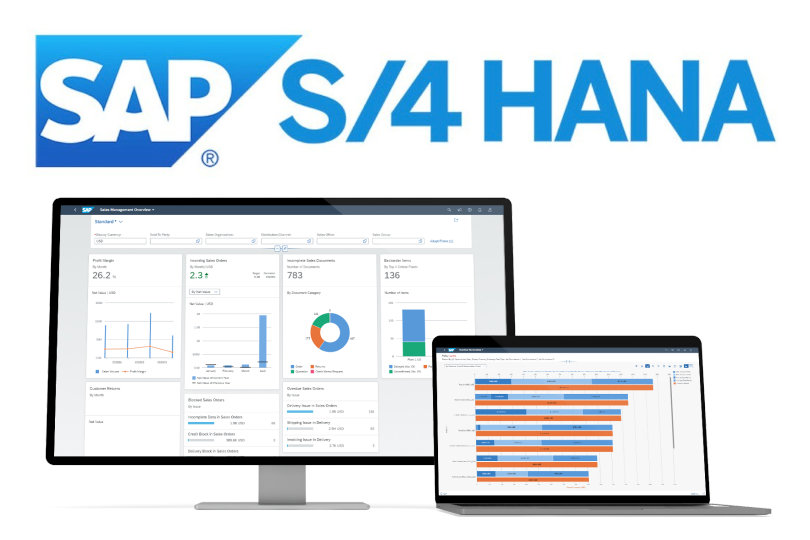Automation and modernization of business processes are the two important topics on which industries spend a lot of time and resources. There’s a constant race between competitors for full automation. Business software development companies provide solutions in intelligent ERPs and are developing them with every update.
Such is the product from SAP, which goes by the name SAP S/4HANA, the forefront of technological development for smart ERPs. The platform is equipped with smart computational powers and provides complete freedom to developers to create applications and processes.
Accely’s S4HANA is available to enterprises in two different formats, cloud-based and on-premise-based.

The solution makes full use of the SAP HANA Cloud database, and most complex computational tasks are done on a third-party-based cloud server. Whereas the on-premise version stores all data in a local storage system.
In this article, we will be looking at the different variants and their pros and cons. Hopefully, it will help you in understanding which one is better suited for your enterprise’s needs.
Differences Between the Two Variants
The two platforms SAP S/4HANA Cloud and the on-premise version, are both different in many aspects. Some of the vital points have been considered, and the two models are discussed in the following points:
Licensing Model
The licensing model is different for the two variants. The on-premise models are licensed as a perpetual license model. This license allows the owner to use the SAP S/4HANA for perpetuity. The charges involved in the on-premise version are only the initial software charges and are based on the number of users using the software.
So, if a company has 1000 employees, but only a team of 50 will be using the SAP S/4HANA on-premise version, then the costs will be only for those 50 employees. The only other overhead charges are maintenance and upgrade charges.
The SAP S/4HANA cloud version has a license that does not extend till perpetuity. There is an annual subscription fee that the company has to pay to maintain access. The subscription usually lasts for 2-3 years, and the cost is directly based on business metrics without any considerations.
So, in this case, if a company has 2000 employees and 100 of them will be using the SAP S/4HANA Cloud. Still, the pricing will be for those 2000 employees.
Infrastructure & Maintenance
For deploying the SAP S/4HANA on-premise, the enterprise must have its hardware, storage system, and a centralized, secure server where all the computation and storage can occur. This is a bit expensive to install, and not many enterprises can afford this. But this will provide more control over the operations that are taking place. The same hardware setup will run updates, and no changes in the setup will be essential.
In SAP S/4HANA Cloud, the entire up-gradation and installation are dependent on SAP. There is very little control in the enterprise’s hands. This saves the cost of expensive hardware, and the processes do not need a good IT team for maintenance. The upgrades are available quarterly, and the updates are primarily automatic.
Customization
Since most of the data and processing are done locally in the on-premise system, it provides a significant degree of flexibility. If there is a requirement for a newer feature, then the in-house IT staff can do that independently.
However, the Cloud-based SAP ERP depends entirely on SAP for any upgrades and modifications. They have to follow SAP’s strict guidelines to maintain the best practices, which somehow reduces the system’s flexibility.
Support and Updates
As the user has more control over an on-premise system, the enterprise can control the frequency at which system updates are being done. It is entirely up to their choice if they want to implement the latest system or not. Although the updating process is a bit critical for the on-premise function and external help is often required.
Whereas the cloud-deployed ERP will be getting updates directly from SAP on a quarterly basis. They are bound to make the updates unless it will violate the good practices norm, and the other modules will not perform properly with those systems.

Things to Keep in Mind Before Choosing One Among the Two?
Both the SAP S/4HANA cloud and on-premise versions have their benefits. If you are confused about which one to choose, then you should first understand the requirements of your business and then proceed.
If the business is new and your clients want to have flexibility in the processes, it is advisable to have an on-premise system. This allows you to control any parameter you wish to and as you want.
The cloud system is rigid but has a certain amount of security that the on-premise system cannot provide. Its predefined configuration and its rules make sure that the best practices are followed.
This also allows scalability as newer modules can be added, and new processes can be very quickly developed on the cloud platform. Also, there is minimal starting cost which makes it affordable for other companies.
In Conclusion
SAP S/4HANA is a compelling platform, and it is guaranteed no matter which version you choose, your enterprise will benefit from this. Other than this, every system has its benefits and drawbacks. It is essential to be clear about the conditions that the company will be working in and choose the platforms accordingly.
If the company is new and getting an on-premise system will be an enormous financial burden, then the cloud version should be chosen. And in some other cases, the on-premise version will prove to be the better choice.




